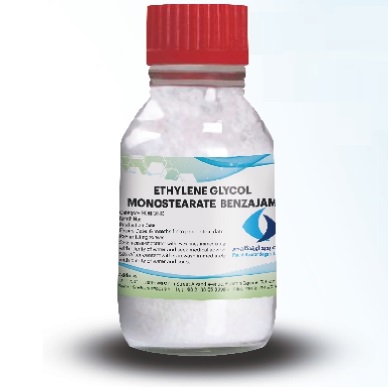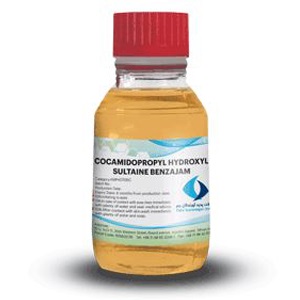Ethylene glycol monostearate
Description
Ethylene glycol monostearate, or glycol stearate, abbreviated as MEG, is an organic compound with the molecular formula C20H40O3. This substance is a combination of stearic acid and ethylene glycol and is used as a component in many personal care products and cosmetics, including shampoos, hair conditioners, and skin lotions. Ethylene glycol is also known under the following trade names:
– Ethane-1,2-diol
– Monoethylene glycol (MEG)
– 1,2-Ethanediol
In fact, this compound, which is prepared from the reaction of ethylene oxide with water, has many applications and is used in the production of antifreeze, plastics, polyester fibers, resins, etc.
It should be noted that substances such as diethylene glycol, triethylene glycol, etc., do not fall into this category. Ethylene glycol monostearate (EGMS) is derived from stearic acid and ethylene glycol and is obtained from vegetables. This substance is white in color and has a waxy appearance. In specific conditions, ethylene glycol monostearate is a colorless, odorless, and toxic liquid and has a slightly sweet taste.
Safety Data Sheet (SDS) Precautions:
Personal Protection When Handling or Working with Ethylene Glycol Monostearate
Eye and Face Protection: Use safety glasses with side shields (or goggles).
Skin and Body Protection: Use protective gloves (impermeable gloves) and protective clothing.
Respiratory Protection: Under normal conditions, if exposure limits to this substance are observed, the use of required respiratory protection equipment is not necessary. If excessive discomfort or irritation persists, ventilation and evacuation may be required.
Safety Precautions in Case of Contact with this Substance:
– In case of contact with eyes, immediately flush the eyes with plenty of water. Rinse the eyes immediately with plenty of water for at least 15 minutes, and if discomfort persists, seek medical advice promptly.
– After contact with the skin, immediately wash it with plenty of water.
– Use appropriate protective clothing, gloves, and eye/face protection.
– If ethylene glycol monostearate is swallowed, seek medical attention at the nearest medical facility.
– Rinse the mouth with plenty of water. Remove contaminated clothing and wash thoroughly before reuse.
Necessary Measures in Case of Leakage:
Workers involved in cleaning up ethylene glycol monostearate spills should use full protective clothing. Remove all unnecessary items to limit ignition sources from the area.
If possible, stop the leak and increase ventilation.
Market Sales and Application of Ethylene Glycol Monostearate
Ethylene glycol monostearate is a nonionic surfactant with active surface agents that are free of water-soluble ions, unlike anionic surfactants, which have negative charges, or cationic surfactants, which have positive charges in aqueous solutions. This nonionic surfactant is more widely used as a primary detergent ingredient than extracted ionic surfactants because anionic surfactants are insoluble in many hard waters, and cationic surfactants are considered weak cleaners.
EG esters are used as a secondary ingredient in shampoos, cleansing creams, liquid soaps, and shower gels. It is also used as an emulsifier in lotions and air fresheners. Considering the extensive use of this product in countless applications in manufacturing industries, ethylene glycol monostearate has a very good market both domestically and for export, and JomCo, with its long history in selling and importing the necessary chemical raw materials for the country’s industries, guarantees the quality of the product according to the provided analysis, making the purchase of ethylene glycol monostearate for the country’s industries possible at an affordable price and high quality.
Some of the applications of ethylene glycol monostearate are as follows:
Manufacture of Detergents
Ethylene glycol monostearate is primarily used to produce household detergents, including laundry powders, liquid laundry detergents, dishwashing liquids, and other household cleaning products.
For Cosmetics and Personal Care Products
Ethylene glycol monostearate is one of the most consumed artificial detergents, which may be used in personal care products (soaps, shampoos, toothpaste, etc.).
Ethylene glycol monostearate is often used in the production of products containing surfactants. Depending on its usage and based on other ingredients, this compound can convert a transparent product into a white one. Ethylene glycol monostearate also stabilizes surfactant systems and determines their concentration. Additionally, EGMS is used as a thickener and secondary emulsifier in creams, lotions, and air fresheners.
Antifreeze
Monoethylene glycol is also used as an antifreeze in vehicles and as a precursor for the production of some polymers.
Plastic Industry
The use of ethylene glycol monostearate in the plastic industry is also considerable. This substance is used in the preparation of resins and polymer fibers and is used in the production of polyester fibers, beverage bottles, and packaging films.



